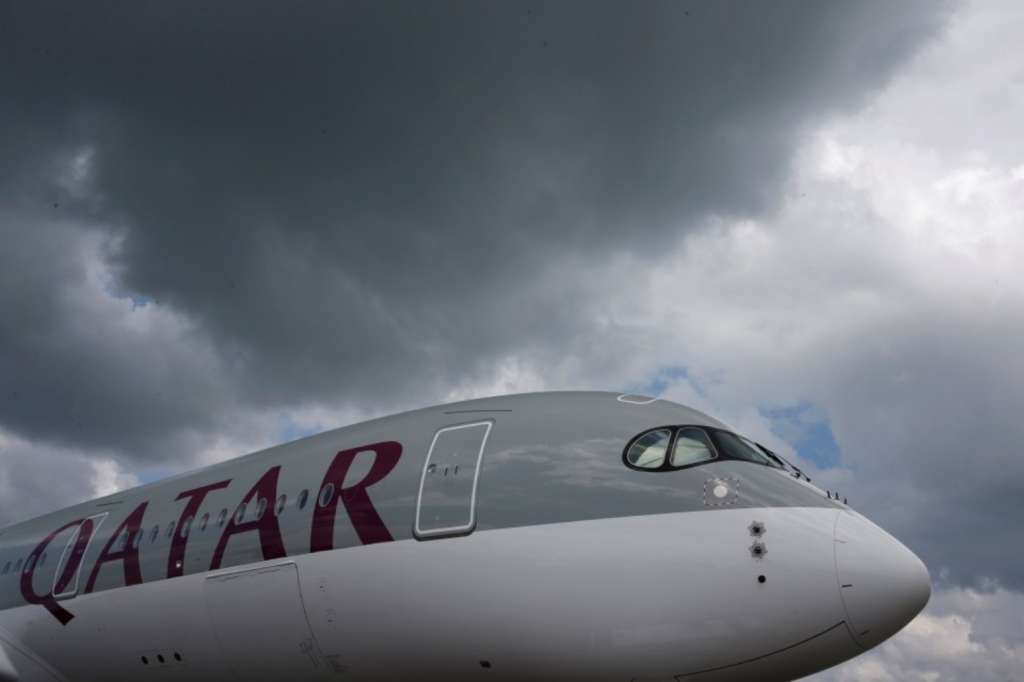Washington – A bad year for Qatar Airways just got a whole lot worse. Amid the ongoing rupture in diplomatic relations between Qatar and its surrounding Arab nations, the small peninsular state’s national airline has been banned from flying to the four countries spearheading what is essentially an economic blockade: Saudi Arabia, the United Arab Emirates, Bahrain and Egypt.
The sudden outbreak in tension reflects long-simmering anger among the region’s more conservative leaders at Qatar’s support for Islamists, such as Egypt’s Muslim Brotherhood, as well as its relatively congenial relations with Iran, Saudi Arabia’s archenemy.
That Qatar’s only land border is with Saudi Arabia has already sent thousands to supermarkets, where frantic shoppers have hoarded food in case of a shortage. But there are borders in the air, too. And Qatar is encircled by its aggressors; its only three air borders are with Saudi Arabia, UAE and Bahrain.
Saudi Arabia has totally banned Qatari-registered planes (i.e., all of Qatar Airways’ fleet) from crossing its airspace — and because it isn’t a signatory of the International Air Services Transit Agreement, it can do so legally. Qatar, UAE and Bahrain are all signatories, but UAE has stood firm on a ban similar to Saudi Arabia’s.
If not for a gesture of goodwill from Bahrain, whose airspace practically encircles Qatar, the airline would have to cease operations. The gesture is this: all Qatari-registered planes can pass through Bahraini airspace, but only along two specific routes — one for incoming planes, the other for outgoing. That’s like channeling a major city’s traffic onto just one highway. Here’s a visualization of what that looks like for outgoing flights:
Before Qatar’s neighbors’ campaign to isolate the country, Qatar Airways flights would regularly pass through Saudi and Emirati airspace. In fact, a full 18 percent of the airline’s flights were to the four countries leading the blockade — all of which are now suspended “until further notice,” per their news release.
According to Iran’s Tasnim news agency, air traffic control in Iran was expecting nearly 200 more Qatar Airways flights to cross its skies per day — in other words, all or almost all Qatar Airways flights will pass through its airspace.
Qatar Airways is a giant, global airline. It has 197 aircraft, most of them geared for long-haul flights to more than 150 destinations from its hub in the Qatari capital, Doha. It is a key player in the Oneworld airline alliance that includes American Airlines.
Those planes regularly traversed Saudi airspace, in particular, before the crisis. All flights to Africa, as well as the airline’s flight to Sao Paulo and onward to Buenos Aires, used Saudi airspace. Many more used the Emirati airspace that lies just to Qatar’s east, toward the rest of Asia and the Pacific.
Maps on the recreated Qatar Airways flight paths before and after the blockade show the circuitous routes the airline must now take to avoid hostile countries’ airspace. The first is the flight from Doha to Sao Paulo. The flight now makes a previously unscheduled stop in Athens, presumably to refuel for the longer flights, though Qatar Airways did not respond to a request for clarification. The diversion adds an extra 1,088 miles and two and half hours to the journey, not counting the time on the ground in Athens.
A second map provides an even starker example: Doha to Khartoum, the capital of Sudan. This flight usually takes three and a half hours, and flies straight across Saudi Arabia. On June 6, the first day of the blockade, the flight looped all the way around the Arabian peninsula, avoiding both Saudi and Emirati airspace, and took six hours (on top of being delayed by half a day; the next day’s return flight was canceled). The distance the June 6 flight traveled was almost double the previous day’s.
Washington Post
